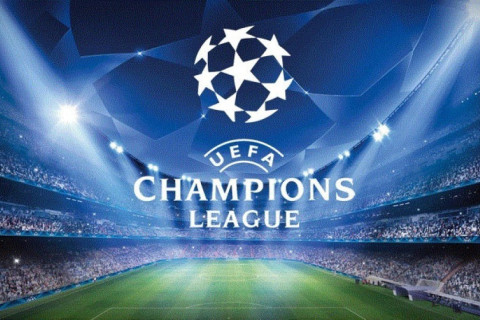The event of the week was the meeting of the Executive Committee of the AFFA, where a series of important decisions were made, including one concerning the number of teams in the Premier League. AFFA decided to increase the number of teams from 10 to 12.
Idman.biz has analyzed this move, reflecting on its historical context, taking a look at Europe, and highlighting both the positive and negative aspects.
Necessary Step
Increasing the number of teams is a commendable decision. It was necessary, perhaps even overdue. The number of teams had been reduced when the country had fewer clubs. In fact, in some years, reserve teams were “patched” into the first division to fill the gaps. Now, with three leagues in the country, having only 10 teams in the top division is too few. Moreover, playing four rounds has made facing the same opponents repeatedly tedious. The small number of clubs also affects the number of players. If each team has an average of 25 players, about 250 players are active in the league. Considering many of them are foreign players, the pool of potential candidates for the national team is narrowing. The increase in the number of teams will positively impact these figures. In short, the number had to be increased, and this step was taken.
Delayed Decision
In fact, this decision cannot be considered timely. Usually, such decisions are made a season in advance, allowing teams to plan their strategies accordingly. Before the current season began, everyone knew that the last-place team would drop to a lower division and the top team from the first division would be promoted to the elite league. Everyone prepared accordingly. But now, everything has changed suddenly. However, the exact changes are unclear. There are three potential scenarios: one team drops out, and three teams come in; no team drops, and two teams come in; or two teams come in, with a playoff between the last-place Premier League team and the third-place first division team. Proponents of each scenario argue that the other two violate sports principles. In reality, all three scenarios violate those principles, as the decision was made just three months before the season ends, disrupting all plans and preparations.
Unbalanced Number
Although the decision to increase the number of teams was not made at the ideal time, it is still the right decision. However, the number being exactly 12 is not something to praise. For a classic league format, 12 is an unbalanced number. With a two-round system, a 22-match competition is considered too short for our clubs and is unacceptable. A four-round competition is beyond the capabilities of our teams. A 44-match season is clearly too much for us. Our Premier League is not the English Championship, where every team plays more than 40 matches.
The Way Out
This means that the Premier League will not be held in a classic system. There are two potential options for this. The first is the two-stage championship that we have seen before. After the two rounds, teams play 10 more matches in two "groups," totaling 32 matches for each club. In this case, the second stage can be played using three different systems: golden points, reset points, or overall points. However, in all cases, a two-stage competition does not replace a standard league. Moreover, there are often meaningless "transition" matches in the second stage, where matches for the bottom-tier teams or top teams from the second stage lose significance. The second option is a three-round system. This system has never been applied in our Premier League but has been tried several times in the first division and worked fairly well. However, applying it in the top division may not be ideal. Some teams may play more home matches, while others may play more away matches, and the opponents may differ based on the draw. This means that some teams could have strong teams at home and weak teams away, while the reverse might be true for others. In short, there will be an imbalance.
Trampoline Effect
The first step in increasing the number of teams raises hopes that it will continue in the future. The number of teams increased from 10 to 12, but why not 14 in 2-3 years? After all, a 26-match championship with a two-round system looks more appropriate. True, the number of matches for each team will drastically decrease, but a 26-match league is undoubtedly much better than a two-stage system. Still, this format is not ideal.
The Ideal Number
There is no need to prove that national championships with 16-18 teams competing in two rounds is the ideal option. UEFA has repeatedly recommended aligning the number of teams with this model. The president of the organization, Aleksander Čeferin, has often stated that he wants all countries to prefer 18 teams. Since 18 teams would be too much for Azerbaijani football, the best option to consider might be 16. This number, considered ideal, does not seem realistic for the next 5-6 years in our country.
Neftchi Atmosphere
Next season, with the number of teams reaching 12, the Azerbaijani Championship will return to the format of 12 years ago. The last season with this number of teams was completed in 2013. After the reduction in the number of teams, the dominance of Qarabag began. Over these 12 years, the Aghdam club has been heading towards its 11th title, having only been surpassed once by Neftchi. The Baku club remains the last champion in a 12-team competition. Neftchi won three consecutive gold medals in the 2010/11, 2011/12, and 2012/13 seasons in a 12-team league. All three seasons were played in two stages, using overall points. The 2009/10 season, with the same number of teams but a golden point system, saw Inter as the titleholder.
The championship with 12 teams began three more times. In the 1995/96 season, the "group of six" continued with a golden point system after one team was removed midway through the competition. Neftchi claimed the title. In the 2001/02 season, the "group of six" continued with reset points, but the championship was not completed due to club uprisings. The 1999/2000 season was the first with 12 teams in a two-round system, ending with Shamkir’s victory. Their title the following year should have been the same, but ANS-Pivani collapsed, leaving 11 teams to start the season instead of 12.
European Examples from Last Season
When the Azerbaijani championship switches to a 12-team system, it will not be the only such league in Europe. There are currently enough leagues where this number of teams is used. According to UEFA’s 2023/24 report, 13 countries have elite leagues with 12 teams: Austria, Bosnia and Herzegovina, Denmark, Finland, Hungary, Iceland, North Macedonia, Northern Ireland, Scotland, Slovakia, Switzerland, and Wales.
Vugar Kheyrullayev
Idman.biz













